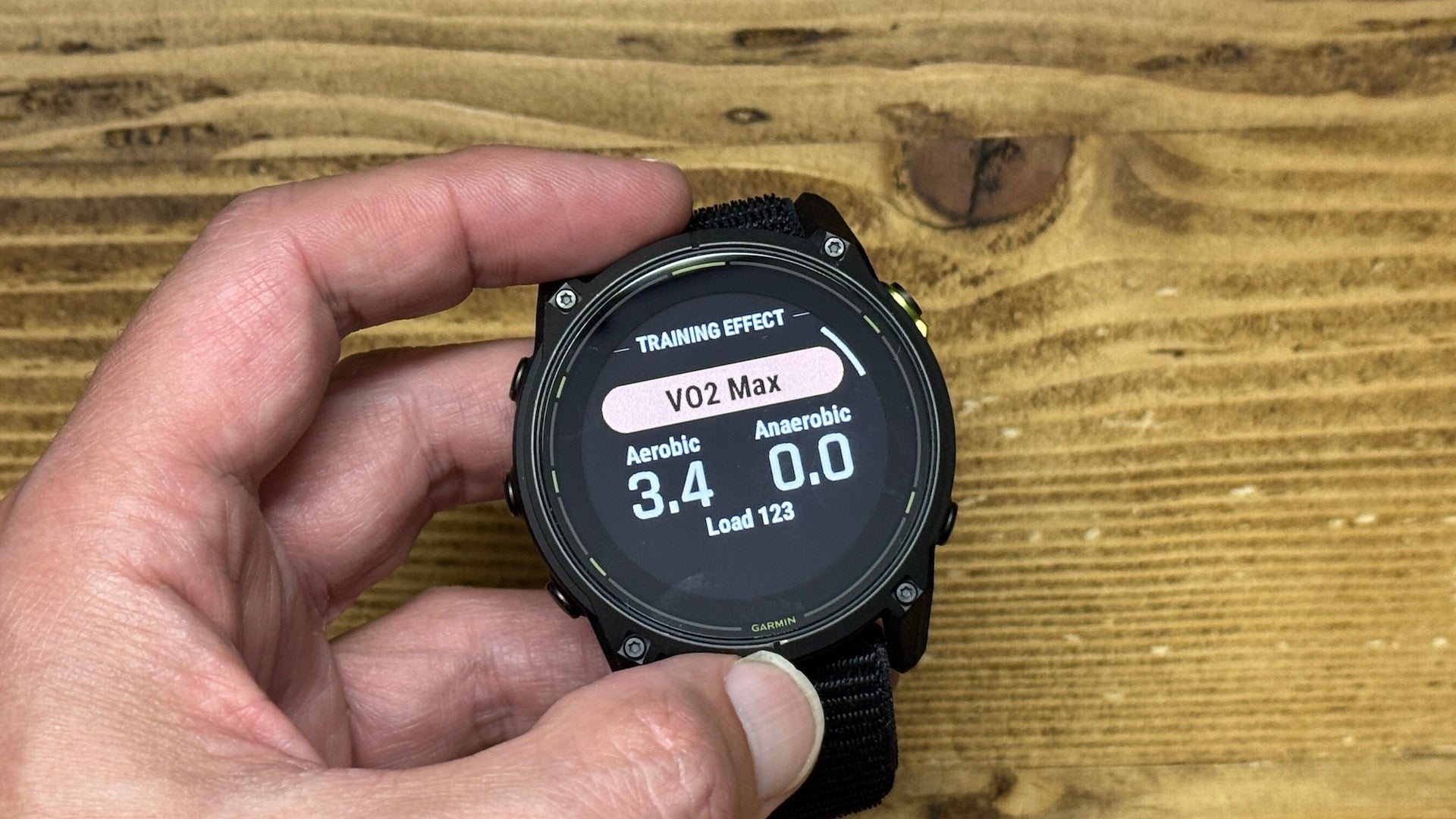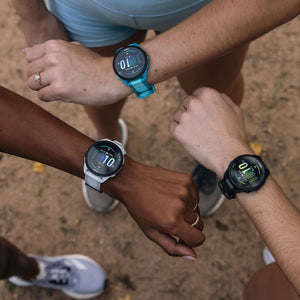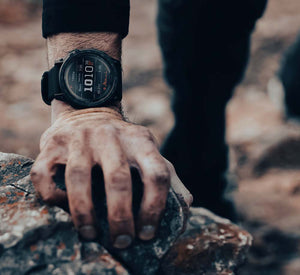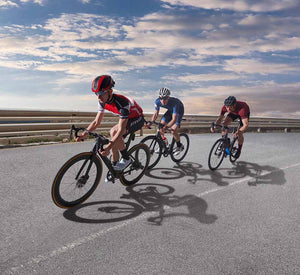
Garmin Enduro 3 Review: A Serious fenix 8 Alternative?
The Garmin Enduro 3 packs more staying power, a lighter design and a rare price drop. But is it the best alternative to the Garmin fenix 8? I spent six weeks pushing the adventure-ready Enduro 3 to its limits to find out.
With a very similar design DNA and a longer battery life, the Garmin Enduro running watch has always been a fenix botherer. When it came to looks and features, it was hard to distinguish past generations. The main difference was battery life and you had to shell out a premium price to land the Enduro’s longer staying power. So unless you really, really wanted the very longest battery life, it was hard to recommend the Enduro over the fenix. But that’s all changed.
The new Garmin Enduro 3 has experienced a rarity in the running watch world – a price drop. It’s now cheaper than the fenix 8 and the latest updates mean it’s packing similar training, racing and adventure-taming heat as its rugged stablemate.
The updates to Garmin’s endurance beast are definitely evolution not revolution. It now cuts a lighter, sleeker shape than the fenix 8 and the Enduro 2. It offers even more solar-boosted battery life and a brighter screen, too. But the headlines go to that more wallet-friendly price tag.
The Garmin Enduro 3 is still a sizable investment but on paper it now looks better value than the Enduro 2 and potentially the fenix 8. But is it? And is the Garmin Enduro 3 now the best Garmin running watch you can buy?
I spent two months testing the new Garmin watch to find out. Read on for the verdict in my Garmin Enduro 3 review.
Table of Contents
- Garmin Enduro 3: An Introduction
- Garmin Enduro 3: How I Tested
- Models, Sizes & Prices
- Garmin Enduro 2 vs 3: What’s the Difference?
- Garmin Enduro 3 vs Fenix 8: The Big Differences
- Garmin Enduro 3: Battery Life
- Running, Fitness and Health Features
- Enduro 3: Mapping and Navigation
- Garmin Enduro 3: Smartwatch Tools
- Garmin Enduro 3: Heart Rate and GPS Accuracy
- Bottom Line: Should You Buy It?
Garmin Enduro 3: An Introduction
The Enduro 3 is rugged, adventure-ready, fully featured and packing the longest battery life you’ll find on any Garmin GPS watch. If you take your training and endurance experiences seriously—and to wilder places—it’s right in the mix as the best running watch to buy.
Though you don’t have to be a regular off-gridder to put this watch on your shortlist. There’s plenty here for urban runners, riders or multisport enthusiasts who just want the Enduro 3’s combination of satisfying build, solid durability, impressive training tools, navigation smarts, and excellent staying power.
It lacks some of the new bells and whistles of the now-pricier fenix 8 (more on that below) but the Garmin Enduro 3 still offers a very competitive selection of tracking, training, recovery, health and smartwatch tools, powered by the latest hardware and optical heart rate, GPS, and bio-sensors.
Like the fenix 8, there’s probably more watch here than many people need and the Enduro 3 definitely caters more to the committed. If you’re just starting out, there are cheaper alternatives in the Garmin Forerunner range like the Garmin Forerunner 165 that might be a better fit.
Garmin Enduro 3: How I Tested
For this review, I spent two months with the Garmin Enduro 3 permanently strapped to my wrist. I wore it 24-7, trained with it, slept with it and used it to run a solo marathon and a mountain ultra. I put it up against the likes of the Garmin fenix 8 AMOLED, the Apple Watch Ultra 2, and a Polar H10 chest strap to see how it stacked up for comfort, features, accuracy, and battery life.
Models, Sizes & Prices
The Garmin Enduro 3 largely sticks with Garmin’s rugged, adventure DNA but it now looks a little more Forerunner and little less ‘fenix’. It keeps things simple with one 51mm size and style, with a stripped back, classic black titanium bezel and back, plus a tough sapphire crystal screen.
The Garmin Enduro 3 price at launch was $899.99. That’s a big drop from the Garmin Enduro 2 which was $1099.99 and now comes in a hundred bucks cheaper than the cheapest fenix 8 AMOLED.
It’s also two hundred bucks cheaper than the cheapest fenix 8 Solar model—the Garmin fenix 8 Solar 47mm at $1099.99—but has the same features.
Among Garmin’s more rugged watches, only the $799.99 fenix E Solar 47mm beats the Enduro 3 on price.
Garmin Enduro 2 vs 3: What’s the Difference?
The major upgrade from Enduro 2 to Enduro 3 is the increased GPS staying power. The Garmin Enduro 3 solar battery life improves across the board thanks to more efficient solar-harvesting tech.
In the right light conditions, the Enduro 3 now boasts more than double the run time in GPS Only mode (up from 150 to 320 hours) and 10% more using multiband GPS.
In Max Battery mode with the right solar conditions, Garmin now claims the Enduro 3 staying power is unlimited.
Beyond that, the Enduro 3’s has a simpler design with less bezel and more screen. It also removes the screen-covering solar lens, brightening up the Memory-In-Pixel (MIP) display.
The Enduro 3 is also marginally lighter, shaving 10% off the weight of the Enduro 2.
There’s a new user interface, too—just like the Garmin fenix 8. I really like the tweaks to how you start runs, change settings and load up Garmin’s Morning Report. You won’t get those updates on the Enduro 2.
Garmin Enduro 3 vs Fenix 8: The Big Differences
The Enduro 3 smartwatch packs the same range of training, performance, recovery and health insights, and navigation tools as Garmins’ top-tier fenix 8 Solar. It also gets the user interface updates that make it easier to navigate the watch.
The power-efficient transflective MIP display is also the same screen as the fenix 8 Solar 51mm.
The biggest difference is the battery life. Obviously the staying power of the Fenix 8 varies depending on the size and whether you choose AMOLED or Solar but the Enduro 3 goes longer than all the fenix 8 options in all settings.
For example, using All Satellite Systems, without any solar boost, the Enduro 3 offers 80-hours’ runtime versus the fenix 8 which comes in between 23 and 68 hours depending on the model.
It’s also lighter. It comes in at 63g compared to the lightest fenix 8 which weighs in at 72g. So if you want the tools of a Fenix in an easier-to-wear watch, it’s a good option.
If you’re happy to forego a few bells and whistles, like the shiny smartwatch-style screen, speaker and mic, and the dive-proof durability, it might even offer better value than the fenix 8 AMOLED, too.
Garmin Enduro 3: Battery Life
On paper, the solar-harvesting Garmin Enduro 3 battery life is the best in the running watch, triathlon watch and multisport watch business.
If you’re the kind of adventurer who races 24-hour ultras, tackles multi-stage endurance events or you’re someone who loves the idea of charging your watch just once a month, the Enduro 3 has your back.
It packs new, more-efficient solar technology that Garmin claims is 120% more powerful than the Enduro 2’s sun harvesting.
On paper, even without the solar smarts, the Enduro 3 offers incredible staying power—between 60 and 210 hours of GPS tracking.
With enough light, the solar smarts can boost that to 60 hours in accuracy-boosting multi-band mode and 320 hours in standard GPS mode.
In testing, it lived up to billing, too. When you’re not using the GPS and heart rate to train, it’s impressively stingy.
The average overnight burn was just 1%. The fenix 8 AMOLED was closer to 2%. Over 24 hours without any workouts, the Enduro 3 shed just 3% compared to the Fenix 8’s 8% drop.
A 90 minute run with the Enduro 3 in Normal mode burned 3%. My 3.5-hour marathon using the multiband Max Accuracy mode burned 5%, while my 8-hour 5 Valleys Ultra using Normal power mode and SAT IQ leeched just 14%.
When it comes to day to day use, it was around 20 days before I needed to pop the Enduro 3 on charge, that included approximately 8 hours of GPS run time.
Running, Fitness and Health Features
When it comes to sports tracking, most of the tools and features on the Enduro 3 are the same as you’ll find on the Enduro 2 and the older fenix 7 models.
The Enduro 3 offers the full suite of Garmin’s sports tracking, training, recovery, navigation, and health tools.
It’s a feature and insights rich beast with all the usual suspects you’d expect on a top-end Garmin multisport watch, including training effect, training load, VO2 Max estimates, race pace predictions, performance condition, adaptive training plans, and workout suggestions—including new strength training plans.
There are tools to help manage your training schedule and ride the stresses and strains of daily life, including Heart Rate Variability, Body Battery, and post-workout recovery time recommendations.
For general health, there’s the usual activity and sleep tracking plus a new FDA-cleared ECG app that records your heart rhythm and checks for signs of atrial fibrillation.
Enduro 3: Mapping and Navigation
The Garmin Enduro 3 is a highly competent navigator, up there with the fenix 8 on features even if it lacks the AMOLED screen that brings those tools to life.
New mapping upgrades add terrain contours on your TopoActive maps, dynamic round trip, and route guidance that can update mid-run to hit a specified distance if you go off-course.
It’s really easy to create routes on the fly or upload courses downloaded from race organizers, Strava, and other third parties.
In testing, I used this feature to follow the 5 Valleys Ultra route and the off-course alerts saved me from costly diversions twice. I also loved Garmins’s ClimbPro tool that served up how many climbs I had left to conquer, the profile of the climb that was currently kicking my ass and how I had left before reaching the summit.
Garmin Enduro 3: Smartwatch Tools
The Garmin Enduro 3 is smart but it isn’t a smartwatch. In fact, without the new voice features, it’s less smart than the new fenix 8.
Even with a growing Garmin ConnectIQ app offering, it’s no rival for the capability of the Apple Watch Ultra 2. But it covers some of the important essentials, including offline music from Spotifty, and Deezer and Co, contactless payments and the new Garmin Messenger app.
Garmin Enduro 3: Heart Rate and GPS Accuracy
The Garmin Enduro 3 offers multiband/dual frequency GPS and the same Garmin Elevate Gen5 Optical heart rate sensor as the Garmin fenix.
To test the Enduro 3 GPS accuracy and heart rate reliability, I tested it head-to-head with a selection of rivals, including the Garmin fenix 8 AMOLED, the Garmin Enduro 2 and the Apple Watch Ultra 2. I also used a Polar H10 chest strap for benchmarking.
I ran everything from built-up urban 10kns to tree-covered forest marathons and even a lumpy mountain ultra. I even spent some time in the sauna heat training.
I switched up the power and accuracy modes from the multi-band GPS Max Accuracy, down to the Max Battery mode that sacrifices accuracy for staying power. I also logged dozens of sessions in Garmin’s SATIQ AutoSelect mode which automatically selects the optimal GPS settings to balance accuracy and battery life.
In testing, the Garmin Enduro 3 GPS performance was generally reliable across the GPS modes. It logged total distances on my official race routes well within the margin for error. Over the 55km 5 Valleys Ultra distance, the Enduro 3, and fenix 8 were just 0.2 miles apart.
During my forest marathon, it sometimes wasn’t quite as good at sticking me to the tracks as the fenix 8—particularly under heavy tree cover—but I’ve tested dozens of watches and very few are on point 100% of the time.
I found the Garmin Enduro 3 GPS accuracy up there with the best performers. Only the Apple Watch Ultra 2 was better in the urban sprawl.
Heart rate was a bit more hit and miss, suffering some common optical heart rate struggles. During interval sessions with sharper changes in intensity, the Enduro 3 sometimes shot higher than the chest strap.
During my ultra, it also struggled to capture my changes in effort on the climbs, descents and stops at aid stations. I had a two-hour section towards the end of my race where it consistently read much higher than the chest strap. It also fared notably worse than the fenix 8.
The Enduro 3’s optical sensor was better during runs where my intensity was steady or increased more steadily. During my marathon, for example, it almost matched the Polar H10 chest strap beat for beat with the odd rogue spike.
Bottom Line: Should You Buy It?
If long battery life is your number one priority, there isn’t a multisports watch to rival the endurance of the Garmin Enduro 3. But this new Garmin watch isn’t just about stubborn staying power.
The Enduro 3 is a good-looking, adventure-ready running watch with a very comprehensive suite of tracking, training and navigation tools. It’s now lighter and more comfortable to wear 24-7 and one of the easier big-build watches to keep on to unlock the vast array of fitness, recovery and health insights.
If you’re happy to have a MIP display rather than the shinier AMOLED screen, don’t need the new dive capabilities and aren’t fussed about the new voice tools, the Enduro 3 packs the breadth of features, accuracy and durability to rival the fenix 8. Particularly now the price has dropped below the fenix 8 models.
For runners seeking smartwatch smarts, the Enduro 3’s screen quality, Garmin Connect IQ app selection and general life tools aren’t close to what you’ll get on the Apple Watch Ultra 2 or for Samsung Watch Ultra. But those watches are no match for the Enduro 3’s battery life.
If you need a more compact watch that offers a similar suite of tools, a long-lasting battery life and reliable performance, the new fenix 8 Solar 43mm or the older fenix 7 Pro Solar 42mm are good options.
Anyone hunting for a rugged watch with an AMOLED screen—but on a budget that doesn’t stretch to the fenix 8 AMOLED—should check out the fenix E, Suunto Race, and the Polar Grit X2 Pro.
Considering the Garmin Enduro 2 v Garmin Enduro 3? If you already own a Garmin Enduro 2, there’s not really enough here to warrant an upgrade. If you’re buying for the first time, the Garmin Enduro 3 is the better watch. But the Garmin Enduro 2 remains an impressively capable option with a big battery life and feature set that beats most of the competition.
The Enduro 3 is notably heavier on the wrist and you won’t get the new software updates that arrive on the Enduro 3 but it’s been my go-to watch since it launched and if you can snare a bargain you’ll be winning.
About Journalist Kieran Alger
Co-founder of The Run Testers, Kieran Alger is an experienced journalist who has spent more than a decade testing running gear. Regularly found wearing four GPS running watches at once, if it claims to make you run better or enjoy running more, he has probably tested it. He's a borderline obsessed runner with more than 50 marathon and multiple ultra finishes. In 2022, he became the first person to run Europe's river Danube from sea to source, a measly 1,830 miles in 66 days. And still had time to test running gear.
Check him out on Instagram or his YouTube Channel!






























